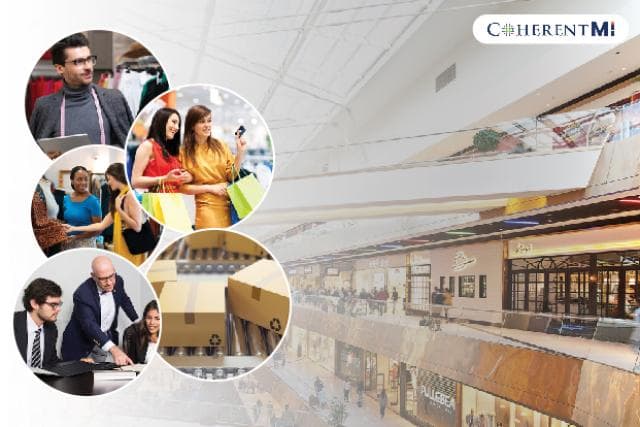The retail landscape in India has undergone a massive transformation over the past decade with the rise of organized retail. Big retailers have disrupted the traditional fragmented "mom and pop" stores to capture a significant share of the booming consumption story of India. In this article, we analyze the key factors driving the rise of organized retail in India and its impact.
Changing Consumer Preferences
Indian consumers have shifted their shopping behaviors and preferences significantly over the years. Rising disposable incomes and exposure to global brands through increased travel, internet, and social media have made consumers more quality and experience conscious. They prefer shopping at large organized retailers that offer wide assortments, competitive pricing, clean and comfortable shopping ambiances, and value-added services like cash on delivery, easy return policies etc. Organized retailers have capitalized on these evolving consumer preferences to attract customers away from neighbourhood kirana stores.
Growth of Shopping Centers and Malls
The proliferation of modern shopping centers and malls across Indian cities has been a game-changer. India had only 2-3 large shopping malls in 2005 which has grown substantially to over 500+ malls currently. Real estate developers have invested heavily to set up integrated shopping hubs offering global retail brands, dining, entertainment and other experience zones under one roof. Shopping malls have become popular socializing and leisure hangout spaces apart from being retail destinations, driving consistent footfalls. Major retailers dominate the anchor stores in premium malls, improving their brand visibility and reach.
Rise of E-commerce
The e-commerce boom over the past few years has brought another disruptive force. E-tailers have made shopping convenient from anywhere and at any time. They offer a mind boggling selection of products at heavy discounts which were earlier not available even in large cities. Domestic e-commerce giants like Flipkart and Amazon along with overseas players like AliExpress have taken organized retail to the nooks and crannies of India. They aggregate products from top brands and sellers on their platforms, matching kiranas on variety and price. E-commerce is growing at a furious pace giving organized players an additional powerful lever to capture market share.
Private Labels and Supply Chain Improvements
Major retailers have also launched their own private labels to provide quality alternatives to national brands at competitive prices. Private labels contribute 30-40% to sales for leading brands like Big Bazaar. Retailers have strengthened supply chain efficiencies to source products directly from manufacturers. This allows them to keep costs low and pass on the benefits to customers in form of lower prices and more offers and deals all through the year. Their supply chain superiority over traditional stores make national and private brands more affordable at organized retail chains.
Changing Consumer Behavior
Consumers today are increasingly health and brand conscious shoppers. The pandemic has further accentuated this shift towards immunity-boosting, nutrition-rich foods, hygiene and wellness products. While metros led this change earlier, smaller cities and towns are now also demanding better quality products and services. Organized players have leveraged this behavior change by expanding into new categories like health supplements, personal care, fresh fruits and vegetables etc. They stock niche brands not easily available elsewhere and use experienced nutritionists to educate customers. This makes them the preferred destination for value-added quality purchases.
Impact of Government Policy Support
The government has also played a facilitating role through reforms supportive of large retailers. Foreign direct investment (FDI) limit in multi-brand retail was raised from 51% to 100%, fueling investments from global retail giants. The goods and services tax (GST) unified the country into a single market boosting organized players. Initiatives like ease of doing business, construction of highways, rail network, cold storage infrastructure have improved logistics efficiency. Policy changes mandating companies to source 30% supplies from small businesses created opportunities for kiranas too. On the whole, a favorable macro-economic and business regulatory environment has encouraged organized retail expansion across India.
Rise of Regional Retail Chains
While large multinational and Indian retailers have grown quickly, significant headway is also being made by regional and localized retail chains. Brands focused on catering primarily to local communities with relevant localized assortments are winning customer trust. They leverage regional/linguistic understanding of customer behavior, habits and food tastes. Some prominent regional chains include Vishal Mega Mart and Nilgiris in South, Spencers in East, Reliance Fresh and More in Western India. These regional retail leaders have effective local sourcing and partnerships with MSMEs in their areas, providing stiff competition even to country-wide organized players.
Impact and Future Outlook
The organized retail sector now accounts for over 8-10% of the overall $800 billion+ retail market in India. It is estimated to grow to 25-30% share by 2025 powered by the ongoing consumption boom, changing demographics of young aspiring population and rapid urbanization. While kiranas still dominate currently due to their convenient neighborhood presence across 6-7 lakh cities and towns, organized retail is consolidating at a scorching pace and redefining the landscape. In coming times, intelligent use of data analytics, seamless omnichannel experiences, supply chain personalization will further augment the organized retail revolution in India with bigger gains anticipated in tier 2-3 cities. Overall, organized retail has already transformed consumer experiences and will play a transformative role in India's future economic growth and development.
